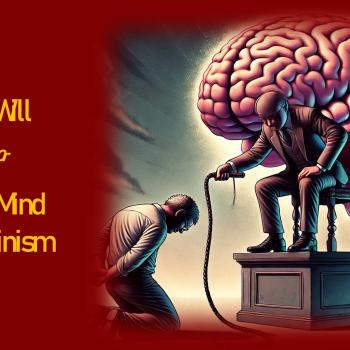The Wolves of Jack London
Jack London 2: White Fang
From wolf to dog and back again
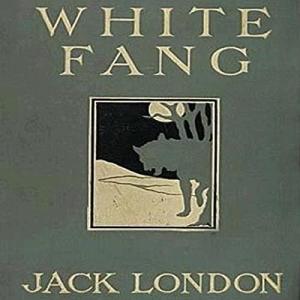
Imagine you are a wolf mistaken for a dog. White Fang had been born of wolf heritage in the wilderness of Alaska, then transported to the San Francisco Bay Area to become a pet dog. Imagine you are White Fang on a shopping trip with your family. Three mischievous boys are pelting you with stones, taunting you and laughing derisively. By instinct you are urged to retaliate, to attack. But, your adopted human master forbids a wild response. This was the tense dilemma faced by White Fang.
“Yet he [White Fang] knew that it was not permitted him to pursue and drag them down. Here he was compelled to violate his instinct of self-preservation, and violate it he did, for he was becoming tame and qualifying him for civilization…but still there was about him suggestion of lurking ferocity, as though the Wild still lingered in him and the wolf in him merely slept.” (London, White Fang 1904).[1]
Incarnate in the dog is the never to be forgotten primordial past. Evolution’s merciless survival-of-the-fittest only sleeps. The first note of alarm could awaken ungovernable preternatural savagery. When the call of the wild is heard by ears within, fierceness and fury become aroused and threaten all that is civil, ordered, and secure.
Jack London: The California Author

When my family moved to northern California from New Orleans in 1978, I made it my mission to find a local author to read and help me identify with my new environment. Some friends with children about the ages of our children took us on a picnic to the Jack London State Historic Park. We hiked a mile through the woods to see the Wolf House, which had burned August 22, 1913.
I started by reading White Fang. After only three paragraphs, I continued to read and read and never looked back.
Oh yes, I had read London’s “To Build a Fire” as a college freshman. I’m still shivering. But, decades later, the wolf books and short stories incarcerated me in Jack London’s worldview. Just what insights does London offer for our anthropology, our understanding of the human condition?
The Wolf in Human Clothing
London engaged in literary lycanthropy and animal anthropology. According to the California naturalist, beneath the thin veneer of today’s civilization, a cauldron of primeval violence—symbolized by the wolf—boils up and spills blood like a volcano spills lava. This is the common thread that sews together Jack London’ troika of wolf books, The Call of the Wild (1903), White Fang (1904), and the Sea-Wolf (1906). In the first, The Call of the Wild, a San Francisco dog goes to Alaska and becomes a wolf. In the second, White Fang, an Alaska wolf comes to San Francisco to become a dog. In the third, a sea captain named Wolf Larsen cites Shakespeare one minute by kills like a wolf the next. Our evolutionary past remains a volcanic force within us, ready to erupt without notice. Is our evolutionary past responsible for what theologians call “original sin” or “inherited sin”?
But, there is more in the Jack London worldview. In his “The Red One” (1916), London speculates that space aliens just might evolve beyond the wolf, beyond civilization to utopia. Can those space aliens save us from ourselves?

As we announced in the first post, we have only one topical question: will we Homo sapiens sapiens evolve into civilized creatures that outgrow our wolflike tendencies toward violence? Here’s our agenda.
THE WOLVES OF JACK LONDON / Jack London Society
Jack London 1: The Call of the Wild
Jack London 4: Lone Wolf Ethics
Jack London 5: Wolf Pack Ethics
Jack London 6: Wolf and Lamb Ethics
Wolves and dogs become the medium through which London advances his anthropology.
Ancient wolves hiding within modern dogs
Is it scientifically the case that today’s dog carries the genes of the prehistoric wolf? Yes. A recent DNA study of Greenland sled dogs, modern American sled dogs, and remains of a 33,000-year-old Siberian wolf along with other data have led an international group of scientists to a fascinating conclusion. “The results indicate that the major ancestry of modern sled dogs traces back to Siberia, where the sled-dog specific haplotypes of genes that potentially relate to Arctic adaptation were established by 9500 years ago” (Sinding 2020).
This strongly supports numerous recent theories indicating a watershed adaptation of our human ancestors who survived the ice age by perfecting hunting and gathering and then advanced to agriculture about this time. This neolithic advance, many speculate, was made possible for Homo sapiens sapiens by the dog, which greatly enhanced hunting and increased village food supply. Without the dog, we would not be who we are today. We humans owe the wolf a debt of evolutionary gratitude for our pets as well as for our survival.
Jack London thought the violent propensity of the wolf lives on today inside our pet dog. This applies not only to the Mastiff and Chihuahua. It applies equally to Homo sapiens sapiens. Paleontological excavations tell us that our ancestors died with arrowheads between their ribs, and with skulls smashed by rocks. Never did our evolutionary predecessors enjoy anything but danger and violence at the hands of their own kind. Today that danger and violence only sleeps lightly, ever ready to rampage anew in video games, playgrounds, and geopolitics.
Wolf and Blood
The wolf is the symbol of blood-longing, of untamed ferocity that leads only to violent death. “The blood longing became stronger than ever before,” London wrote of Buck in The Call of the Wild. “He was a thing that preyed, living on the things that lived, unaided, alone, by virtue of his own strength and prowess, surviving triumphantly in a hostile environment where only the strong survived.” The law of survival broaches no loyalty, no empathy, no compassion. Only nature blood “red in tooth and claw.”
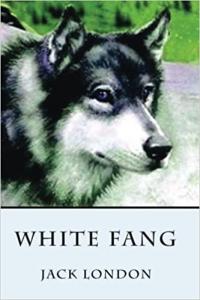
As I just mentioned, the dog becomes a wolf in The Call of the Wild while the wolf becomes a dog in White Fang. This reverses the direction of transformation, only reinforcing the never-ceasing dialectic between wolf and dog, between chaos and order, between animal and human. In the first we move from the civil to the savage. In the second from the savage to the civil.
In the wilderness of Alaska, White Fang “was the one little gray cub of the litter. He had bred true to the straight wolf-stock.” The reader cannot but think of this wolf pup as cute. As a cuddly puppy. As one of us. Yet, White Fang’s growth toward maturity takes him down two paths simultaneously, the path of the wolf and the path of the dog. Canis lupus becomes canis familiaris, to be sure, but canus lupus is never abandoned.
If masculinity symbolizes primeval violence, might femininity symbolize the compassion we hope will transform civilization? Utah State University scholar Paul Crumbly perceives in White Fang a “feminine critique of masculine power” exhibited by Kiche, White Fang’s she-wolf mother. Where I suggest that London’s readers are jolted back and forth between savage and civil forces, Crumbly’s variant is a “shift back and forth between masculine and feminine points of view.” Despite Crumbly’s helpful insights regarding gender juxtaposition, I would fold gender tension into the broader tension between the savage and the civil.
In the climactic scene of White Fang on a farm just south of San Francisco, a prison escapee bent on murder invades his new family home. The protective fidelity of the dog reunites with the untamed fury of the wolf to down the criminal in a moment of redemptive violence. The fierceness of the wild protects civilized order from imminent primeval chaos.
Does the chaos of natural selection lurk menacingly just beneath the surface of all that we consider orderly, progressive, delightful? “Civilization,” says German film director Werner Herzog, “is like a thin layer of ice upon a deep ocean of chaos and darkness.” What we see in London’s wolf troika is that ice cracking.[2]
Buck and the Rabbit
Some years ago a Siberian Husky came to visit our northern California home. He demanded admittance to the house, especially to the kitchen. To get rid of him, we took him by car three miles to the Humane Society and left him there. Two days later the Humane Society phoned to alert us: the dog had escaped. The following day, the Husky turned up again on our front porch.
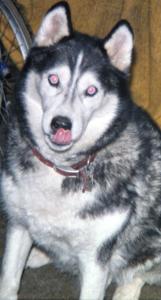
Deciding this was an omen, we welcomed the dog into our family as a permanent member. This is clearly what the canine vagrant wanted. Because he looked so wolf-like, we could think of no other appropriate name than “Buck”. Perhaps White Fang would do, but we elected Buck.
Buck was clearly a dog. So we assumed. He snuggled. He played. He romped. He attempted each night to sneak into the bed of one or another Homo sapiens sapiens.
Now, you should know that when Buck moved in with our five children that a rabbit was already living in the back yard. I had carefully constructed the safest rabbit hutch ever built, at least in my judgment. The runway was 14 foot long, because that was the length of the two-by-fours I purchased. The runway was totally encased in chicken wire. The rabbit could run out over a ravine so that its droppings returned to nature. In the event that the rabbit should become afraid, it could run into a confined area totally enclosed in plywood. The rabbit could run through a maze to safety, a maze no predator could manage.
Did I feel proud? Yes, I did. This rabbit cage was predator-proof. I had no anxiety whatsoever about letting Buck roam the back yard.
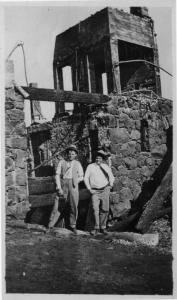
I did note, however, that Buck spent hours studying the rabbit and its protective home. The rabbit almost taunted the beast, feeling as secure as I wanted the rabbit to feel. Again, I announced my pride of ingenuity to anyone who would listen.
The day came when I returned from the university and found the corpse of the rabbit on the back sidewalk. Tearing up, I walked to the rabbit cage with dead body in hand. The chicken wire had been torn open right at the point where the runway met the maze.
Here is what I surmised. Buck watched the rabbit’s habits. When the rabbit was at the far end of the runway, fourteen feet from the maze, Buck ran full speed at the chicken wire. He crashed through. He caught the rabbit just before it reached safety.
I inquired of Buck, “what happened? why did you kill the rabbit?” Buck said nothing. I concluded my Buck, just like Jack London’s Buck, wanted “to kill with his own teeth and wash his muzzle to the eyes in warm blood.”
Is nature already graced?
When we’re reading The Call of the Wild or White Fang, we fall in love with the animals, especially Buck and White Fang. We root for them when they are heroic. We weep when they’re mistreated or forlorn. We rant in rage when the human characters behave more barbarously than the animals. We earnestly want each book to come to a happy ending for the sake of the animals.
Both London the author and you or I as the reader love Buck and White Fang as they are. We love the dogs, interior wolf included. Their wolfness belongs to their character, to their essence. To expunge the wolf within would amount to a great loss.
Does truly loving our pet dog require loving the wolf within?
There is something majestic about the wolf, after all. The wolf traverses streams and forests and mountains, endures temperatures forty degrees below zero, and conquers elk and moose in mortal battle. Is there not something regal here?
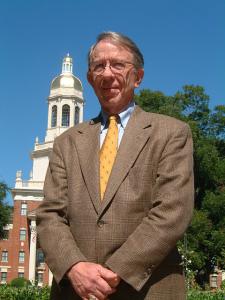
Evolution gave nature its wolf. Is nature graced thereby? The theologian must ask this unnerving question. After all, at least in both the Byzantine and the Latin traditions of Christian thinking, nature is graced by God in its very creation.
“The natural order is never autonomous but always and already graced,” concludes theologian Ralph C. Wood after reading both Pope Benedict XVI and fiction writer Flannery O’Conner.
From St. Thomas Aquinas and the scholastics we have learned that grace does not destroy but completes and perfects nature (gratia non destruit naturam, sed elevat et perficit). An act of divine grace would not rid us of the wolf, even when redeeming us from our own wolfness.
God’s redeeming work in our human lives does not mean a loss of the nature we were born into. Rather, divine grace means its perfection. “However twisted and tarnished, we still bear the image of God within us as the result of both our creation and our redemption,” Ralph Wood adds. “We are not only created in Jesus Christ; we are also re-created by his assuming our own human nature. These are not dogmatic assertions relevant to Christians alone; they are also anthropological claims concerning the universal human condition (Wood, Flannery O’Conner, Benedict XVI, and the Divine Eros 2010, 40).
Conclusion
The next time you look into your dog’s eyes, address the wolf behind those eyes. If the light is just right, you’ll see your own reflection in those eyes. You may even catch a glimpse of the wolf within you. Say something to your pet dog to the effect that, “you and I, Sweetheart, share the same wolfness. You and I, Sweetheart, are both graced by the God who creates and redeems us.”
▓

Ted Peters is a Lutheran pastor and emeritus seminary professor, teaching theology and ethics. He specializes in the creative mutual interaction between science and theology. He co-edits the journal, Theology and Science. His one volume systematic theology is now in its 3rd edition, God—The World’s Future (Fortress 2015). His book, God in Cosmic History, traces the rise of the Axial religions 2500 years ago. He has undertaken a thorough examination of the sin-and-grace dialectic in two works, Sin: Radical Evil in Soul and Society (Eerdmans 1994) and Sin Boldly! (Fortress 2015). Watch for his forthcoming, The Voice of Christian Public Theology (ATF 2022). See his website: TedsTimelyTake.com and Patheos column on Public Theology, https://www.patheos.com/blogs/publictheology/.
Ted Peters’ fictional series of espionage thrillers features Leona Foxx, a hybrid woman who is both a spy and a parish pastor.
▓
[1] The best source to date of Jack London’s corpus is found at the Huntington Library’s Jack London Archive; https://web.archive.org/web/20040604041358/http://www.huntington.org/LibraryDiv/JackLondon.html .
[2] Jack London read both Herbert Spencer and Thomas Huxley. Spencer’s Social Darwinism advocated a human ethic of conforming to “survival of the fittest,” a ruthless society the lets the poor die by the wayside. Huxley, equally Darwinian, advocated a human ethic that would defy our animal heritage and embrace a just and compassionate civilization. In his detailed treatment, Lawrence Berkove, says, that “following Huxley, London simultaneously believed in evolution yet trusted that however it worked out the obligation of human beings to cultivate individual ethics and pursue the goal of ethical civilization was paramount.” (Berkove, Jack London and Evolution: From Spencer to Huxley 2004, 253).
References
Basket, Sam. 1996. “Sea Change in The Sea Wolf.” In Rereading Jack London, by eds Leonard Cassato and Jeanne Campbell Reesman, 92-109. Stanford CA: Stanford University Press.
Berkove, Lawrence. 2004. “Jack London and Evolution: From Spencer to Huxley.” American Literary Realism 36:3 243-255.
Berkove, Lawrence. 1996. “The Myth of Hope in Jack London’s “The Red One”.” In Rereading Jack London, by eds Leonard Cassuto and Jeanne Campbell Reesman, 204-216. Stanford CA: Stanford University Press.
Brandt, Kenneth. 2018. “Jack London: An Adventurous Mind.” In Jack London, by Kenneth K. Brandt. Liverpool: Liverpool University Press (Northcote).
Brooks, David. 2019. The Second Mountain. New York: Random House.
Deudney, Daniel. 2020. Dark Skies: Space Expansionism, Planetary Geopolitics, and the Ends of Humanity. Oxford: Oxford University Press.
Ellis, James. 1978. “A New Reading of The Sea Wolf.” In Jack London: Essays in Criticism, by ed Ray Wilson Ownbey, 92-99. Santa Barbara CA: Peregrine Smith.
Faulstick, Dustin. 2015. “The Preacher Thought as I Think.” Studies in American Naturalism 10:1 1-21.
Kean, Sam. 5/6/2011. “Red in Tooth and Claw Among the Literati.” Science 332 654-656.
Labor, Earle. 1996. “Afterword.” In Rereading Jack London, by eds Leonard Cassuto and Jeanne Campbell Reesman, 217-223. Stanford CA: Stanford University Press.
Leder, Steve. 2019. “The Beasts Within Us.” Time Special Edition on The Science of Good and Evil 84-87.
London, Jack. 1903. The Call of the Wild.
—. 1916. The Red One.
—. 1906. The Sea Wolf.
—. 1904. White Fang.
Lundblad, Michael. 2013. The Birth of a Jungle: Animality in Progressive Era US Literature and Culture. Oxford: Oxford University Press.
Moritz, Joshua. 2008. “Evolutionary Evil and Dawkins’ Black Box.” In The Evolution of Evil, by Martinez J Hewlett, Ted Peters, and Robert John Russell, eds Gaymon Bennett, 143-188. Gottingen: Vandenhoeck & Ruprecht.
Niebuhr, Reinhold. 1941. The Nature and Destiny of Man, 2 Volumes. New York: Scribners.
Oliveri, Vinnie. 2001. “Sex, Gender, and Death in The Sea Wolf.” Pacific Coast Philology 38 99-115.
Peters, Ted. 2/2009. “Astrotheology and the ETI Myth.” Theology and Science 7:1 3-30.
Reesman, Jeanne Campbell. 2012. “The American Novel: Realism and Naturalism.” In A Companion to the American Novel, by ed Alfred Bendixen, 42-59. Oxford: Wiley-Blackwell.
Scott, Nathan. 1994. “A Ramble on a Road Taken.” Christianity and Literature 43 (2): 205-212.
Sinding, Mikkel-Holger S., et.al. 2020. “Arctic-adapted dogs emerged at the Pleistocene-Holocene transition.” Science 368:6498 1495-1499.
Stasz, Clarice. 1996. “Social Darwinism, Gender, and Humor in Adventure.” In Rereading Jack London, by eds Leonard Cassuto and Jeanne Campbell Reesman, 130-140. Stanford CA: Standord University Press.
Tillich, Paul. 1951-1963. Systematic Theology. 1st. 3 Volumes: Chicago: University of Chicago Press.
Wilkinson, David. 2013. Science, Religion, and the Search for Extraterrestrial Intelligence. Oxford: Oxford University Press.
Williams, Jay. 2014. Author Under Sail: The Imagination of Jack London 1893-1902. Lincoln NB: University of Nebraska Press.
—. 2021. Author Under Sail: The Imagination of Jack London 1902-1907. Lincoln NB: University of Nebraska Press.
Wood, Ralph. 2010. “Flannery O’Conner, Benedict XVI, and the Divine Eros.” Christianity and Literature 60:1 35-64.
Wood, Ralph. 2012. “The Lady in the Torn Hair Who Looks on Gladiators in Grapple: G.K. Chesterton’s Marian Poems.” Christianity & Literature 62:1 29-55.





